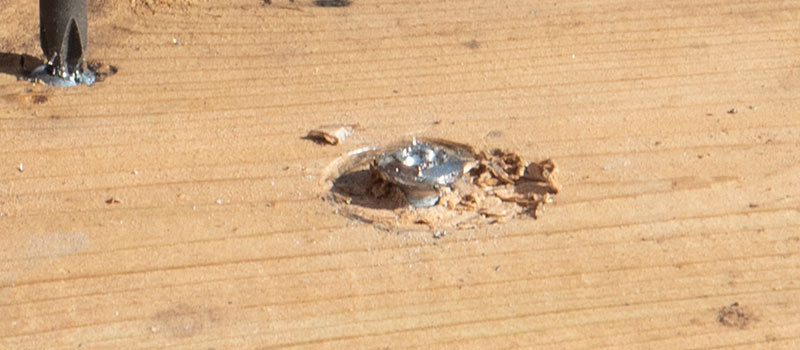
How to Prevent and Remove Stripped Screws

Removing a screw from wood is typically very quick and easy with a screwdriver or a drill in reverse. When a screw is stripped, the drive on the screw is worn out, making it difficult to remove. When this occurs, the screwdriver or drill bit isn't able to grip the screw head. Although this can be challenging, we offer several solutions that will help you prevent stripped screws as well as remove them.
How to Prevent Stripped Screws
Stripped screws can be caused by factors such as wear and tear and rust or corrosion. There are a few other variables that can prevent stripped screws. Avoid making these mistakes:
- Using a screwdriver that is too big or too small for the screw.
- Using the wrong type of screwdriver for the screw head.
- Using a power drill at a high-speed setting or the wrong angle.
- Applying too much torque or inserting the screwdriver incorrectly.
- Working with certain drive types. Slotted drives are an example that is more likely to strip the screw.
How to Remove Stripped Screws
There are many ways to remove stripped screws. Each method has the potential to get the job done depending on the situation. Continue reading to discover these solutions.
#1. Use Rubber Bands
Using rubber bands is a great method that works best with wide rubber bands. The rubber band adds traction and creates better grip for the screwdriver to connect with the screw.
First, place the rubber band on top of the screw. Next, insert the point of the screwdriver and slowly untighten the screw. The screwdriver may break the rubber band from the pressure caused by the twisting. Be prepared with several rubber bands close by. Steel wool is another alternative to rubber bands that can achieve the same result.

2. Use a Manual Screwdriver
Using a manual screwdriver to remove stripped screws instead of an electric drill and driver bit is a method that works well. A manual screwdriver gives you more torque and control than an electric drill. You can lean into the screw and add pressure without stripping the screw any further.

#3. Change the Size of the Driver Bit
When attempting to remove a stripped screw with a drill, using a diver bit that matches the size of the screw in its original state likely won't fit correctly. Try using a bit that is a little larger to see if the size fits better.
4. Use a Stripped Screw Extractor
Stripped screw extractors may be the preferable option for removing stripped screws. Screw extractors are attachments for your drill that are available in a variety of types and sizes. They can be easily inserted into your drill just like any other drill bit.
Each end of the extractor serves a different purpose. One end drills into the head of the screw so there is a clear, smooth hole. The other end of the extractor is threaded for removing the screw.
First, you will use one side of the extractor to create a hole in the screw head. Once the hole is created, you will insert the threaded end of the extractor into the hole. The threads grip into the screw head and pull it right out of the wood.

5. Try Using Pliers
Using pliers to remove stripped screws is only a viable option if there is any space between the screw head and the surface it's fastened to. If there is space, you may be able to twist it out with a set of standard locking pliers also known as vice grips.
Once you get a firm grasp of the screw from the top or the side, you should be able to turn the screw until it loosens and pulls away from the material.

6. Tap Screwdriver With a Hammer
The next method to remove a stripped screw is tapping a manual screwdriver into the screw head with a light hammer. Doing this allows the tip of the screwdriver to go slightly deeper into the screw for better grip.
Tap the back of the screwdriver handle with a hammer three or four times. Keep the screwdriver inserted in the screw and twist it to remove it.

7. Add an Abrasive
Adding a powder or liquid abrasive to the screw head adds friction for increased grip when turning the screw. Drop a pinch of non-chlorinated cleaning powder or fine sand.
8. Cut a Slot
Cutting a slot into the screw head can be done with a rotary cutting tool or a multi-tool fitted with a metal blade. Once there is a slot in the screw, you can insert the top of a flathead screwdriver into the groove to turn the screw.

